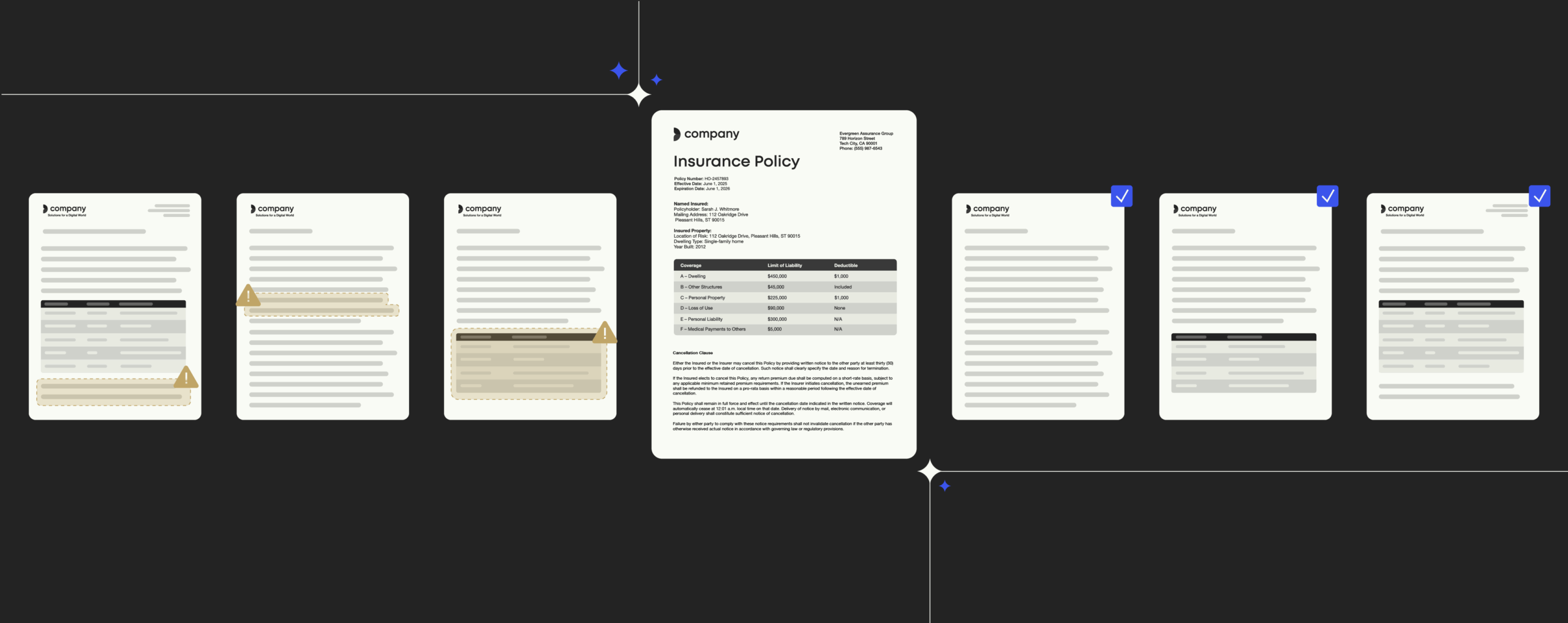Five tips to prepare for the digital workplace through 2021 and beyond

2021 is here, and after an unexpected year that’s thrown workplaces into new challenges and more disruption than anyone could have predicted, it’s time to consider what the digital landscape will look like for this year, and how long-lasting transformations may be.
Of course, none of this can be discussed without mentioning the elephant in the room – COVID-19. The global crisis around the coronavirus has transformed communities globally and has had a strong impact on workplaces. The organizations that have thrived despite the challenges of 2020 are ones which were quickly able to adapt and be flexible to change, whether that meant changing workflows and technology to support digital working, or coming up with new approaches to working hours and tasks.
And that’s something which is set to continue in 2021. Consequently, organizations need to be prepared and ready to adapt, innovate, and change ways of working to ensure they stay ahead of the competition.
As Gartner’s Research Vice President, Brian Burke, describes it: “The unprecedented socioeconomic challenges of 2020 demand the organizational plasticity to transform and compose the future”. The organizational plasticity described is strongly related to the digital workplace and ongoing digital transformation in particular. Workplaces need to continue to be flexible, both in terms of location, but also in adopting the correct technology and amending status quo workflows to ensure productivity is optimized.
There’s also a greater need than ever before to ensure and protect against the risks of cyberattacks. With organizations continuing to enable working from home to a large extent for the foreseeable future, organizations must be proactive at avoiding cybersecurity risk and ensuring all employees are up to date with the most advanced security protocols.
When considering the implementation, improvement, or continued maintenance of your digital workplace in 2021, it’s vital to bear all the above in mind, as secure and adaptable digital workplaces will provide an advantage to your organization and allow you to stand out from the competition.
Since being ahead of the latest technology trends is key to remaining competitive in today’s digitally-driven markets, here are our five top tips for supporting the digital workplace.
summary
The digital workplace in 2021
- Continuation of the digital workplace at home.
- Further use of role-specific tools.
- AI innovations.
- Automation.
1. Continue to take the digital workplace home
Working from home was one of the biggest challenges that 2020 faced. Organizations that had previously been entirely on-premise suddenly faced the task of onboarding and setting up huge workforces to work from home for an indeterminate amount of time. Although the bulk of employees are now set up to work from home, the challenge of remote working is far from over. With many companies extending their working from home policies until at least mid-way through 2021, there’s still work left to do to ensure accessibility in the remote workforce.
The remaining challenges relating to the digital workplace at home include the need to ensure all work processes are adapted to support this way of working. For example, interviewing and onboarding are now processes that often take place virtually. Many organizations will need to examine how they are doing this to ensure they’re not responding to a need by just moving the traditional processes online, but instead creating a process deliberately to provide the best experience and process for others. Scenarios like this require a thorough re-evaluation and plan to ensure successful execution and integration.
Enterprises may benefit from encouraging employees to integrate their business and private lives more so that the best work-life benefits come to the fore. For example, employees currently often receive business and private mail on two separate platforms, whereas integrating the two into one application is more efficient. Similarly, integrating business and personal calendars will allow employees and their families to easily compare their agendas, manage their shared calendars, and receive important updates.
Promoting a less divided attitude towards work and home life and powering both with digital workplace tools and technologies will give employees a more productive edge over those who compartmentalize different aspects of their lives.
The digital workplace guide 2021
What you need to know to future proof your company’s technology
2. Enhance your digital workplace through technology
From the latest sales enablement tools to the recruitment of your digital workers, it doesn’t matter how advanced your technology is – if you do not have the right digital ecosystem in place, the technology will either not work or be extremely limited in its output. Each digital tool should not be viewed in isolation but instead seen as a cog in your tech infrastructure which needs to be able to fully integrate with existing systems.
Companies will differ in their technology needs depending on size and industry but, universally, marketing and IT teams will need to closely align on how each tech development can be successfully implemented to supercharge business objectives, without compromising the digital ecosystem. It goes without saying that each new program also needs to undergo extreme (and constant) security vetting, as one weak link in your tech stack could leave your enterprise-wide open to the increasingly advanced cyberattacks facing modern digital workplaces.
Cyber attacks and ensuring security are increasingly important – as the nature of work is increasingly online, it’s necessary to have systems in place that ensure security across everything that is used. Organizations must ensure there is security around all the systems and levels used within them – it’s no longer sufficient to ensure that just data is protected. It’s also not just a risk for large organizations – research suggests that 61% of data breaches are targeted towards companies with less than 100 employees, meaning that it’s imperative organizations of all sizes ensure every aspect of their digital workplace is securely protected.
3. Educate employees about everyday AI solutions
The digital workplace is being increasingly defined by AI. According to research stemming from Deloitte’s global surveys, AI has been identified as the top emerging technology CIOs plan to invest in. By 2021, Forrester predicts more than 40% of companies and one-tenth of future startups will employ more digital workers than human ones.
Although once viewed as a futuristic buzzword, AI now fits so seamlessly into modern work life that it can often go under the radar for many employees. Take Microsoft Office 365: Office is constantly innovating with new AI techniques, ranging from optimizing work calendars to determining the priority of emails, helping employees create better documents, and improving personal and enterprise-wide productivity. Users either adopt these AI digital workplace solutions intuitively or can be brought up to speed through a series of automatic prompts or videos.
Making sure your teams are on top of the latest AI innovations provided in the everyday programs they’re using will help streamline digital workplace workflows and improve enterprise-wide output on a daily basis. Particularly in an era of remote working, it’s important to use AI to aid workflows and increase productivity, ensuring teams continue to be trained and kept up to date with the latest tools and benefits.
4. Automate manual tasks
Alongside AI, there will be a greater focus on the automation of manual tasks in the modern digital workplace in 2021. Research indicates that 71% of employees surveyed think the future workplace should be fully automated, and 93% are of the opinion that increasing the use of digital technologies leads to a better digital workplace. Automation of manual tasks is a helpful and productive way of aiding employee workflows.
As a platform that facilitates the automation of document creation, Templafy is aware of the value automation tools add to modern enterprises. A 2019 TEI report by Forrester found that organizations with 10,000 users saw a 1,239% ROI after implementing Templafy’s automation solutions. Users created documents 30% faster with Templafy, 95% of IT’s involvement was eliminated, and users saved around 4 hours per week by avoiding manual document reviews.
With less time spent on repetitive manual tasks (in this case, document formatting, following compliance regulations, searching for brand assets, and creating documents from scratch), employees are able to focus their time on the job they’ve been hired to do and shift their attention to higher-value work.
5. Address generational technology gaps
A good digital workplace isn’t just determined by the innovative technology it implements. A digital workplace strategy must, above all, focus on the enterprise-wide user adoption of its systems and software.
A major challenge to this objective is the generation gap – the average workforce will be made up of five generations for the first time in history in 2021. By 2025, millennials are predicted to account for 75% of the global workforce. As a result of this, companies can’t rely on a one-size fits all approach to the workplace, due to the diverse needs of their multi-generational workforce and age-specific preferences impacting varying attitudes towards technology. Although 2020 has boosted the digital skills of many in the older age brackets who are now adept at hosting a Zoom-based quiz, there’s still a long way to go in ensuring software is accessible for employees of all skill sets and background types.
Choosing software that is complex in its backend but easy to use is one of the main ways organizations can ensure even the least tech-savvy employees are benefitting from tech innovation. When introducing any new software into your technology stack, you should consider all levels of ability within your workforce. An update might be mastered in seconds by a millennial, but their baby boomer colleagues might need more guidance to get to grips with the same feature.
As we’ve seen with the likes of Microsoft Office 365, software is constantly updating, so it’s vital to offer regular training sessions for those who need it, as well as giving employees easy access to technical support so they can operate on a more level tech-playing field.



